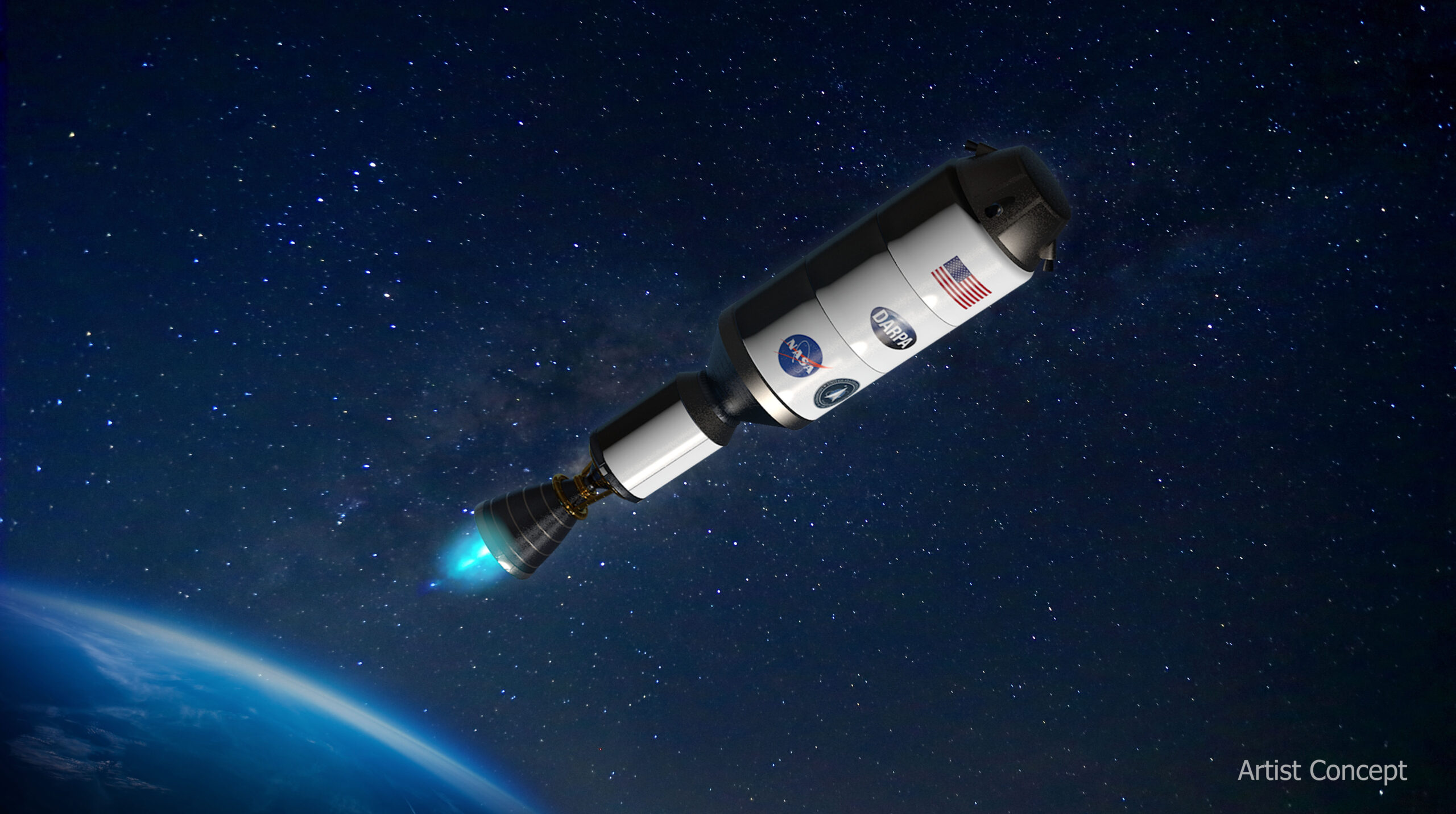“We’re going to fly this demonstration, gather a bunch of great data and really, we believe, usher in a new age for the United States [and] for humankind, to support our space exploration mission,” announced Kirk Shireman, vice president of Lockheed Martin Lunar Exploration Campaigns, regarding the ambitious DRACO project, an in-space test for nuclear thermal propulsion (NTP). The demonstration rocket for agile cislunar operations (DRACO), a joint venture between NASA and the U.S. military, is slated for a launch in late 2025 or early 2026, with the spacecraft being developed by Lockheed Martin.
NASA’s involvement in NTP technology can be traced back to their early aim of launching a crewed Mars mission with a nuclear-powered spacecraft through a program called NERVA in the 1970s, which was canceled in 1972. The vision for Martian exploration persists, with NASA eyeing a late 2030s or early 2040s timeline for a crewed mission, hoping to leverage nuclear thermal propulsion technology to shorten the journey time. Unlike conventional chemical rockets, nuclear thermal rockets utilize compact fission reactors to generate significant heat by splitting atoms, which is then harnessed to create thrust by heating a propellant gas. NASA and DARPA’s interest in nuclear thermal propulsion has been long-standing, initiating the DRACO program back in 2021.
Lockheed Martin is collaborating with Virginia-based company BWX Technologies for the development of the DRACO spacecraft’s nuclear reactor and the production of its high-assay low-enriched uranium (HALEU) fuel. The DRACO spacecraft is planned to be launched to a high orbit around Earth, with a de-orbit time of at least 300 years, ensuring the complete expenditure of its nuclear fuel upon re-entry. The team behind the mission is prioritizing safety, equipping the nuclear engine with a ‘poison wire’ to prevent the initiation of a chain reaction during launch, only to be activated once in orbit. “Our life-limiting factor is how long we can keep the hydrogen cryogenic,” revealed Tabitha Dodson, DRACO program manager at DARPA, emphasizing the significance of maintaining ultra-low temperatures for the hydrogen propellant.
DRACO is anticipated to operate in orbit for several months, focusing on demonstrating the longevity of the NTP engine in space, rather than carrying scientific instruments. “With more speed, agility and maneuverability, nuclear thermal propulsion also has many national security applications for cislunar space,” stated Kirk Shireman, highlighting the broader implications of this technology. Despite the complexity and ambitious nature of the project, DRACO will not require a heavy-lift rocket and will fit within the fairing of a standard launcher like SpaceX’s Falcon 9. Total contracts awarded for DRACO work amount to $499 million, provided all milestones are reached, with half the funding coming from DARPA and the other half from NASA.
The NASA and DARPA partnership for the DRACO program is non-reimbursable, with the collaboration designed to expedite the development efforts. “Congratulations to both NASA and DARPA on this exciting investment, as we ignite the future, together,” remarked NASA Administrator Bill Nelson, on the announcement of their collaboration. Faster transit times achieved through nuclear thermal rockets could significantly reduce risks for astronauts, while increasing scientific payload capacity and providing higher power for instrumentation and communication. DARPA is spearheading the overall program including systems integration, scheduling, safety, and assembly, acting as the contracting authority for the development of the entire stage and the engine.
The last nuclear thermal rocket engine tests conducted by the United States occurred over 50 years ago, marking the DRACO demonstration as a historic milestone in space exploration. NASA, the Department of Energy (DOE), and industry are also developing advanced space nuclear technologies for multiple initiatives aimed at harnessing power for space exploration. Under the agreement, NASA’s Space Technology Mission Directorate (STMD) will lead technical development of the nuclear thermal engine to be integrated with DARPA’s experimental spacecraft. “Expanding our partnership to nuclear propulsion will help drive forward NASA’s goal to send humans to Mars,” stated NASA Deputy Administrator Pam Melroy.
“The ability to accomplish leap-ahead advances in space technology through the DRACO nuclear thermal rocket program will be essential for more efficiently and quickly transporting material to the Moon and eventually, people to Mars,” said Dr. Stefanie Tompkins, director, DARPA. “Recent aerospace materials and engineering advancements are enabling a new era for space nuclear technology, and this flight demonstration will be a major achievement toward establishing a space transportation capability for an Earth-Moon economy,” explained Jim Reuter, associate administrator for STMD. NASA and DOE are also working on commercial design efforts to advance higher temperature fission fuels and reactor designs for a nuclear thermal propulsion engine. “A safe, reusable nuclear tug spacecraft would revolutionize cislunar operations,” said Kirk Shireman, emphasizing the strategic advantage of NTP systems.
Similar Post
Lockheed Martin, a seasoned player in nuclear controls, has built numerous radioisotope thermoelectric generators for NASA’s planetary missions and has invested heavily in cryogenic hydrogen storage and transfer. Joe Miller, BWXT Advanced Technologies LLC president, expressed excitement for the project, stating, “We look forward to building the reactor and manufacturing the fuel at our Lynchburg, Virginia, facilities.” The DRACO project not only benefits exploration but also serves national defense, offering rapid advancement in propulsion technology. The in-space flight demonstration of a nuclear thermal rocket engine vehicle under the DRACO project is scheduled to take place no later than 2027.
The fission-based reactor of the NTP system will use a special high-assay low-enriched uranium, or HALEU, to convert the cryogenic hydrogen into an extremely hot pressurized gas. The nuclear reactor will not be activated until the spacecraft reaches a nuclear-safe orbit, enhancing the safety of the NTP system. The nuclear thermal propulsion (NTP) engines offer thrust as high as conventional chemical propulsion with two-to-five times higher efficiency. NASA is looking to nuclear thermal propulsion as an enabling technology for its long-term goal of manned Mars missions. The goal of Try to include related contextual current happenings in the field to improve on the situation.

















